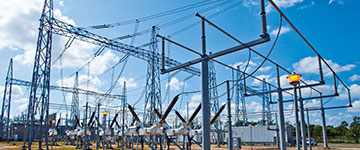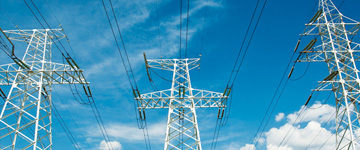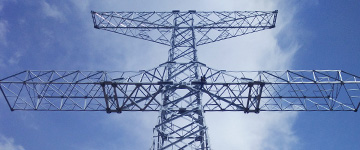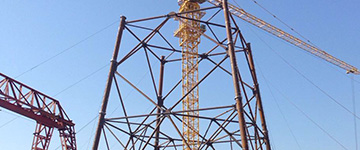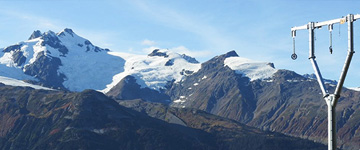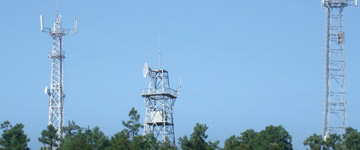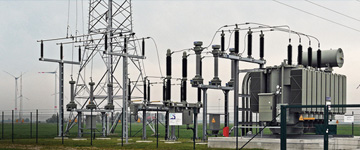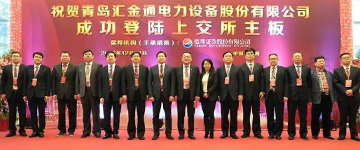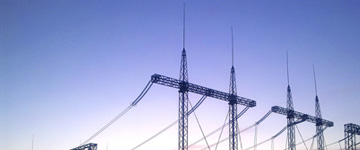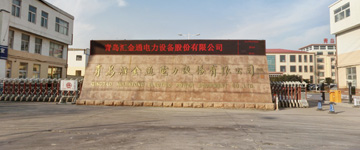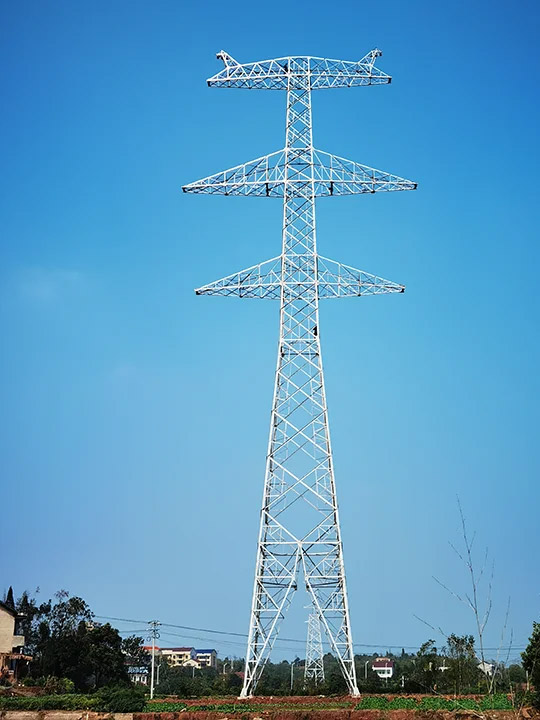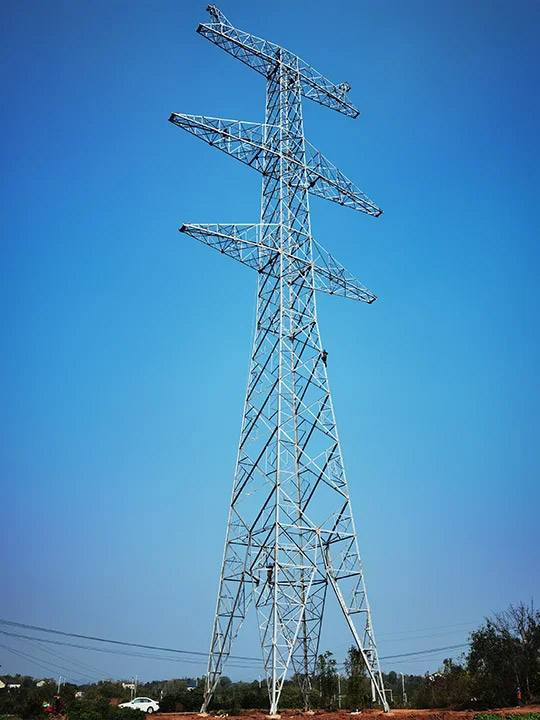Angle steel frame
500kV Jinjiang-Dayuan, Jinjiang-Putian-Ziling Substation Project
Project Overview
The 500kV Jinjiang-Dayuan, Jinjiang-Putian-Ziling Substation Project is a significant power transmission initiative aimed at enhancing the capacity, stability, and reliability of the regional electrical grid in Fujian Province. The project involves the construction of a high-voltage transmission network connecting Jinjiang to the Dayuan, Putian, and Ziling Substations, supporting power distribution across key areas.
The project covers a distance of approximately 120 kilometers and involves the construction of 160 transmission towers. The route passes through urban areas, agricultural land, and hilly terrains, requiring diverse construction strategies to address the varying topography. The project will establish a reliable 500kV power corridor to meet increasing electricity demand, promote industrial development, and support future growth.
Construction Plan & Execution
1. Route Survey & Design Optimization
A detailed site survey was conducted to evaluate the topography, land ownership, environmental impact, and existing infrastructure. The final route was optimized to minimize the disruption to local communities, preserve agricultural land, and avoid protected ecological zones. GIS-based route planning and environmental impact assessments were employed to make sure the transmission lines passed through the most suitable areas.
Special attention was given to the interconnection of Jinjiang, Putian, and Ziling substations, ensuring minimal disruption to existing power grids while enhancing system redundancy and reliability.
2. Foundation Design & Tower Construction
Given the varied geography, multiple types of foundation solutions were employed:
• Concrete pile foundations were used in areas with softer soil conditions, ensuring deep and secure anchoring for the transmission towers.
• Shallow foundations were applied in more stable, flat areas to minimize construction costs and disruption.
• Rock anchor foundations were necessary in hilly or rocky terrains, designed to withstand the high stresses of the power transmission system.
For tower construction, steel lattice towers were chosen for their strength, stability, and ability to withstand high wind loads, especially in coastal and hilly regions. The use of high-lift cranes and helicopter-assisted tower placement was deployed in challenging terrain, ensuring safety and efficiency in tower erection.
3. Conductor Installation & Stringing
The conductor stringing process was managed using modern tension stringing methods that allowed for precise control of conductor tension and sag. Advanced monitoring technology was used during installation to continuously assess and adjust tension in real-time, ensuring optimal conductor performance and preventing mechanical failure.
To ensure long-term performance, anti-corrosion coatings were applied to the conductors and supporting structures, especially in coastal areas susceptible to moisture and salt damage.
4. Environmental Mitigation & Preservation
The project was designed with significant emphasis on environmental protection, ensuring minimal impact on local ecosystems. Key strategies included:
• Erosion control measures along the transmission line route, particularly in hilly areas, to prevent soil erosion and sedimentation.
• Wildlife conservation efforts to protect local species during the construction process, including rerouting the line to avoid sensitive habitats.
• Revegetation and land restoration initiatives post-construction, helping to restore the land used during the project.
Environmental monitoring continued throughout the construction process to assess any potential impact on water sources, local vegetation, and wildlife habitats.
Design & Technical Services
Our company provided comprehensive design and engineering services to support the entire project lifecycle, which included:
• Route and Structural Design:
Using advanced software tools for geospatial mapping and load analysis, we optimized the route design to ensure minimal interference with urban, agricultural, and protected land. Detailed structural simulations were performed to assess the expected environmental and mechanical stresses on towers and transmission lines.
• Power System Design:
Detailed electrical load analysis was performed to ensure that the transmission system could handle expected power demand from the Jinjiang, Putian, and Ziling substations. Our design included provisions for future load growth, voltage regulation, and overcurrent protection to safeguard the power grid.
• Customized Tower Design:
The design of steel lattice towers was tailored for the unique geographical conditions of the region, ensuring optimal performance across different terrains. The towers were designed to resist high wind loads, especially in coastal areas, and were made from corrosion-resistant materials to withstand humid and salty conditions.
• Smart Grid Integration:
The project integrated smart grid technology to improve the real-time monitoring, control, and automation of the power transmission system. This includes remote monitoring sensors for fault detection, power flow control, and grid stability management, ensuring the efficient operation of the power network.
• Electromagnetic Compatibility:
Special attention was given to the electromagnetic fields (EMF) generated by the transmission lines. Our design ensures compliance with EMF safety standards, reducing the impact on surrounding areas, including residential and commercial zones.
After-Sales Service & Maintenance
We are committed to ensuring the long-term functionality and reliability of the 500kV Jinjiang-Dayuan, Jinjiang-Putian-Ziling Substation Project through comprehensive after-sales services. These services include:
1. Routine Maintenance & Inspection
Scheduled maintenance programs to assess the condition of towers, foundations, and conductors. This includes:
• Tower integrity checks to ensure the stability and security of the transmission infrastructure.
• Conductor tension and alignment inspections to monitor sag, stretch, and wear.
• Regular corrosion assessments to maintain the protective coatings on towers and conductors, particularly in coastal areas.
2. Emergency Fault Response & Repairs
In the event of a fault or unexpected failure, our emergency response team is available 24/7 to address issues such as:
• Rapid diagnosis and fault isolation to identify the root cause of the issue.
• Quick repair and restoration of affected sections to minimize downtime.
• Temporary power rerouting to ensure continued electricity supply to affected regions.
3. Upgrades & Capacity Expansion
To ensure the transmission line remains future-proof, we provide options for system upgrades to increase capacity or integrate emerging technologies, including:
• Smart monitoring and control systems for advanced grid management.
• Conductive enhancements for higher capacity conductors or stronger tower structures in the event of increased demand.
4. Training & Technical Support
We provide comprehensive training programs for utility operators, ensuring that they are equipped with the knowledge to maintain and operate the transmission line effectively. This includes:
• On-site and remote training on system monitoring, maintenance procedures, and emergency response protocols.
• Technical support services for troubleshooting and system optimization throughout the project lifecycle.
The 500kV Jinjiang-Dayuan, Jinjiang-Putian-Ziling Substation Project is a transformative power transmission initiative that will enhance the region’s electrical capacity, ensure grid stability, and meet growing demand. By leveraging state-of-the-art engineering designs, cutting-edge construction techniques, and robust after-sales services, we are confident that this project will provide reliable and sustainable power transmission for decades.
For inquiries regarding our transmission solutions, customized design services, or maintenance plans, please contact us today!
The 500kV Jinjiang-Dayuan, Jinjiang-Putian-Ziling Substation Project is a significant power transmission initiative aimed at enhancing the capacity, stability, and reliability of the regional electrical grid in Fujian Province. The project involves the construction of a high-voltage transmission network connecting Jinjiang to the Dayuan, Putian, and Ziling Substations, supporting power distribution across key areas.
The project covers a distance of approximately 120 kilometers and involves the construction of 160 transmission towers. The route passes through urban areas, agricultural land, and hilly terrains, requiring diverse construction strategies to address the varying topography. The project will establish a reliable 500kV power corridor to meet increasing electricity demand, promote industrial development, and support future growth.
Construction Plan & Execution
1. Route Survey & Design Optimization
A detailed site survey was conducted to evaluate the topography, land ownership, environmental impact, and existing infrastructure. The final route was optimized to minimize the disruption to local communities, preserve agricultural land, and avoid protected ecological zones. GIS-based route planning and environmental impact assessments were employed to make sure the transmission lines passed through the most suitable areas.
Special attention was given to the interconnection of Jinjiang, Putian, and Ziling substations, ensuring minimal disruption to existing power grids while enhancing system redundancy and reliability.
2. Foundation Design & Tower Construction
Given the varied geography, multiple types of foundation solutions were employed:
• Concrete pile foundations were used in areas with softer soil conditions, ensuring deep and secure anchoring for the transmission towers.
• Shallow foundations were applied in more stable, flat areas to minimize construction costs and disruption.
• Rock anchor foundations were necessary in hilly or rocky terrains, designed to withstand the high stresses of the power transmission system.
For tower construction, steel lattice towers were chosen for their strength, stability, and ability to withstand high wind loads, especially in coastal and hilly regions. The use of high-lift cranes and helicopter-assisted tower placement was deployed in challenging terrain, ensuring safety and efficiency in tower erection.
3. Conductor Installation & Stringing
The conductor stringing process was managed using modern tension stringing methods that allowed for precise control of conductor tension and sag. Advanced monitoring technology was used during installation to continuously assess and adjust tension in real-time, ensuring optimal conductor performance and preventing mechanical failure.
To ensure long-term performance, anti-corrosion coatings were applied to the conductors and supporting structures, especially in coastal areas susceptible to moisture and salt damage.
4. Environmental Mitigation & Preservation
The project was designed with significant emphasis on environmental protection, ensuring minimal impact on local ecosystems. Key strategies included:
• Erosion control measures along the transmission line route, particularly in hilly areas, to prevent soil erosion and sedimentation.
• Wildlife conservation efforts to protect local species during the construction process, including rerouting the line to avoid sensitive habitats.
• Revegetation and land restoration initiatives post-construction, helping to restore the land used during the project.
Environmental monitoring continued throughout the construction process to assess any potential impact on water sources, local vegetation, and wildlife habitats.
Design & Technical Services
Our company provided comprehensive design and engineering services to support the entire project lifecycle, which included:
• Route and Structural Design:
Using advanced software tools for geospatial mapping and load analysis, we optimized the route design to ensure minimal interference with urban, agricultural, and protected land. Detailed structural simulations were performed to assess the expected environmental and mechanical stresses on towers and transmission lines.
• Power System Design:
Detailed electrical load analysis was performed to ensure that the transmission system could handle expected power demand from the Jinjiang, Putian, and Ziling substations. Our design included provisions for future load growth, voltage regulation, and overcurrent protection to safeguard the power grid.
• Customized Tower Design:
The design of steel lattice towers was tailored for the unique geographical conditions of the region, ensuring optimal performance across different terrains. The towers were designed to resist high wind loads, especially in coastal areas, and were made from corrosion-resistant materials to withstand humid and salty conditions.
• Smart Grid Integration:
The project integrated smart grid technology to improve the real-time monitoring, control, and automation of the power transmission system. This includes remote monitoring sensors for fault detection, power flow control, and grid stability management, ensuring the efficient operation of the power network.
• Electromagnetic Compatibility:
Special attention was given to the electromagnetic fields (EMF) generated by the transmission lines. Our design ensures compliance with EMF safety standards, reducing the impact on surrounding areas, including residential and commercial zones.
After-Sales Service & Maintenance
We are committed to ensuring the long-term functionality and reliability of the 500kV Jinjiang-Dayuan, Jinjiang-Putian-Ziling Substation Project through comprehensive after-sales services. These services include:
1. Routine Maintenance & Inspection
Scheduled maintenance programs to assess the condition of towers, foundations, and conductors. This includes:
• Tower integrity checks to ensure the stability and security of the transmission infrastructure.
• Conductor tension and alignment inspections to monitor sag, stretch, and wear.
• Regular corrosion assessments to maintain the protective coatings on towers and conductors, particularly in coastal areas.
2. Emergency Fault Response & Repairs
In the event of a fault or unexpected failure, our emergency response team is available 24/7 to address issues such as:
• Rapid diagnosis and fault isolation to identify the root cause of the issue.
• Quick repair and restoration of affected sections to minimize downtime.
• Temporary power rerouting to ensure continued electricity supply to affected regions.
3. Upgrades & Capacity Expansion
To ensure the transmission line remains future-proof, we provide options for system upgrades to increase capacity or integrate emerging technologies, including:
• Smart monitoring and control systems for advanced grid management.
• Conductive enhancements for higher capacity conductors or stronger tower structures in the event of increased demand.
4. Training & Technical Support
We provide comprehensive training programs for utility operators, ensuring that they are equipped with the knowledge to maintain and operate the transmission line effectively. This includes:
• On-site and remote training on system monitoring, maintenance procedures, and emergency response protocols.
• Technical support services for troubleshooting and system optimization throughout the project lifecycle.
The 500kV Jinjiang-Dayuan, Jinjiang-Putian-Ziling Substation Project is a transformative power transmission initiative that will enhance the region’s electrical capacity, ensure grid stability, and meet growing demand. By leveraging state-of-the-art engineering designs, cutting-edge construction techniques, and robust after-sales services, we are confident that this project will provide reliable and sustainable power transmission for decades.
For inquiries regarding our transmission solutions, customized design services, or maintenance plans, please contact us today!
Hotline



